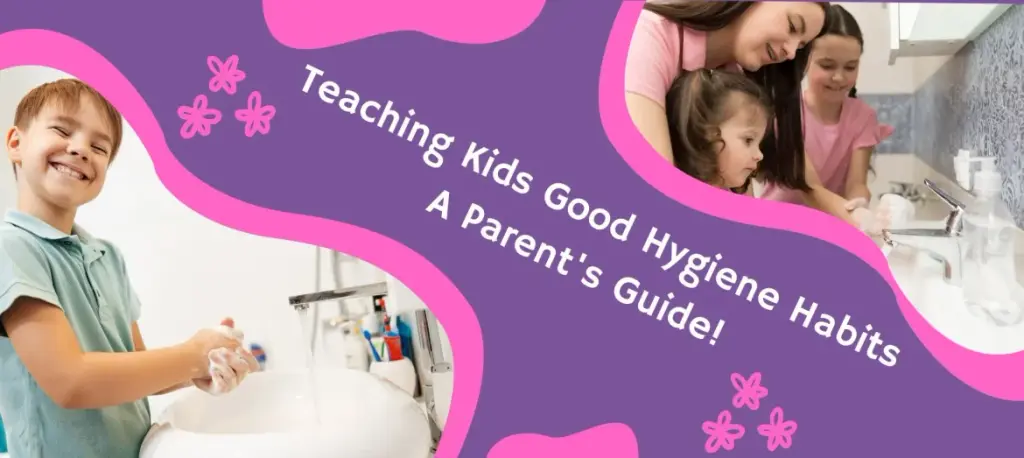Good hygiene more than just about smells fresh and looking presentable—it’s about maintaining good health. As parents, one of our many responsibilities is to ensure our kids adopt personal hygiene habits early on, setting the foundation for a lifetime of well-being. Whether you’re seeking activities on hygiene for younger children or personal hygiene tips for students in their pre-teens, this guide has got you covered.
Why is Good Hygiene Important?
Personal hygiene is the practice of maintaining one’s body clean to prevent illness and enhance overall well-being. By teaching our kids the importance of good hygiene, we equip them with the tools they need to avoid infections, boost their self-confidence, and promote healthy habits that will serve them well into adulthood.
1. Start Young: Hygiene for Preschoolers
- Hand Washing: The basics always start with washing hands. Use fun soaps, sing songs like ‘Happy Birthday’ twice (which is roughly 20 seconds) to ensure they scrub long enough, and celebrate every time they remember to wash their hands after using the restroom or before eating.
- Teeth Brushing: Use flavored toothpaste and toothbrushes with their favorite characters. Turn it into a fun morning and nighttime routine.
- Bath Time Fun: Make bath time a game. Include water toys, colored bath bombs, or fun bubble baths to make cleaning up enjoyable.
2. Activities for Middle School Students
- Discussion Time: Initiate open conversations about puberty and the importance of cleanliness during this period.
- DIY Activities: Consider personal hygiene teaching activities like creating homemade soaps or deodorants.
- Hygiene Kits: Create hygiene kits with them which can include items like sanitary pads/tampons, face wash, hand sanitizers, etc. This helps them be prepared and also understand the importance of each item.
3. Personal Hygiene Tips for High School Students
- Stay Organized: Teach them to keep their personal spaces, like lockers and desks, organized and clean. This reduces the spread of germs.
- Healthy Habits: Discuss the connection between good hygiene, eating healthily, staying hydrated, and getting enough sleep.
- Skin Care: Introduce them to basic skincare routines, especially if they begin to experience acne.
4. Fun Teaching Methods for All Ages
- Hygiene Charts: Use stickers or stamps every time they complete a hygiene task. Reward them after a certain number of stamps.
- Story Time: Share stories or videos related to hygiene teaching. There are many books and shows that introduce hygiene topics in a fun and engaging manner.
- Group Activities: Organize hygiene activities for middle school students or elementary students in group settings. This can include hygiene quizzes, role-playing, or even creating personal hygiene posters.
In Conclusion Teaching personal hygiene to kids is an ongoing process. As they grow and their needs change, the way you address hygiene will evolve. Remember, the key is consistency and making the process engaging and educational. By instilling these habits early on, you’re not only fostering a sense of responsibility and self-care in your children but also ensuring their long-term health and well-being. Happy teaching!
Frequently Asked Questions (FAQs)
1. At what age should I start teaching my child about personal hygiene?
Answer: It’s never too early to start! Even as toddlers, children can begin learning basic hygiene practices. For instance, preschoolers can be taught the importance of hand washing, teeth brushing, and enjoying bath time. As they grow older, you can introduce more complex hygiene routines and discussions.
2. My 10-year-old is resistant to using deodorant. How can I make it more appealing to them?
Answer: It’s common for pre-teens to resist new hygiene habits. To make deodorant more appealing, you can involve them in the buying process—let them choose a scent or brand they like. Alternatively, introduce them to DIY activities where they can make their own natural deodorants. Highlighting the importance of smelling fresh, especially after physical activities, can also help them understand its significance.
3. How do I address the topic of puberty and hygiene without making it awkward for my middle school students?
Answer: Open communication is key. Initiate a casual conversation and ensure your child that it’s a natural part of growing up. Using resources like books or videos can sometimes make the topic less intimidating. Creating hygiene kits together can also serve as an interactive way to address the changes and the increased importance of personal hygiene during puberty.
4. My child is diligent about personal hygiene at home, but forgets at school. How can I help them remember?
Answer: One effective method mentioned in the blog is creating hygiene charts or using reminders. Reward systems can also motivate them to keep up with their hygiene routines. Additionally, packing a small hygiene kit in their backpack with essentials like hand sanitizer or face wipes can serve as a tangible reminder throughout the school da
5. Are there any recommended books or shows that introduce hygiene in an engaging manner for kids?
Answer: Absolutely! There are many books and shows tailored to different age groups that address hygiene topics in fun and relatable ways. While the blog didn’t specify particular titles, a quick search at your local library or online can provide you with a plethora of resources. Always review content first to ensure it aligns with the values and information you wish to impart to your child.

